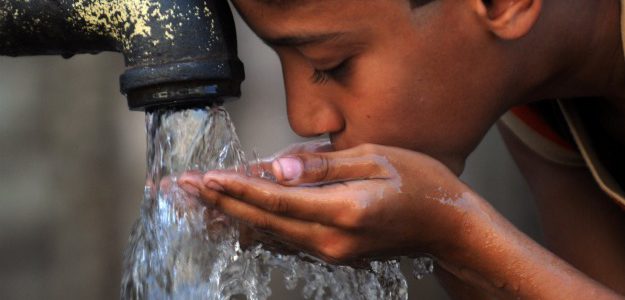
At the Millennium Summit, the United Nations (UN) addressed the effects of economic water scarcity by listing safe drinking water as an International Development Goal. The goal aimed to achieve reduction in the percentage of population without sustainable drinking water by the year 2015. Pakistan failed to reach the goal and the UN replaced Millennium Development Goals (MDGs) with the Sustainable Development Goals (SDGs).
Pakistan must now pursue water security and provision as a national security goal followed by a national water policy. In addition to the water SDGs, the policy must pursue the overarching goal of ensuring a sustainable model of water provision for drinking, municipal and economic requirements.
The need for integrated planning for development, efficient use and equitable distribution of water is undeniable and is the start of any policy solution geared to take on the water conundrum that plagues Pakistan.
The Pakistan Engineering Council (PEC) had prepared a draft national water policy that covered the provision of safe drinking water, hygienic sanitation, protection of water resources, flood management, water quality, treatment of water and water reuse. This draft policy not only gave pause to those who believe Pakistan’s water situation is insurmountable but also proved to pessimists the existence of intelligentsia in the country. Much has been said on ‘what to do’ but the state’s policy makers must now focus on ‘how to do’ it.
Ad-hoc and crisis driven executive policy decisions pertaining to water are limited by five year electoral cycles and the inherent fallacy with this situation is that it is not only incoherent but it also pushes Pakistan deeper into the abyss in the long run. The state requires a national water policy that is not only integrated but is also cognizant of international politics concerning water. The policy solution must be entrenched in two essential elements, which are; water development and water management.
Water development pertains to construction of dams, alternative energy sources and an agreed framework for water sharing with Afghanistan and India. Dams such as the Kalabagh Dam must be alleviated from the shadows of domestic politics and must be viewed with a national interest lens. A short term strategic imperative must be sough with nuclear power plants so that the reversal of the energy crisis is undertaken and Pakistan’s water storage capacity is increased simultaneously.
In addition to this, a diplomatic framework with Afghanistan must be reached before India successfully aids the former in building dams with storage capacity which would result in depleted levels of water inflow for Pakistan. If policy makers decide to act, they will realise that as a lower riparian state, Pakistan has several international laws that favour it. Pakistan Water Partnership (PWP) director recently told a media outlet, “The Indian storage capacity is 30 percent, which they struggle to increase up to 50pc, while Pakistan with 140 MAF of available water resources has a capacity to store only 7pc, which is a real source of concern for policymakers.”
Moreover, water management can be further stratified into efficient use of water in the agricultural and industrial sectors, flood management, conserving rainfall, treatment of water and educating the population about conservation of water.
The government must actively and unrelentingly ask the industrial and agricultural sectors to switch to water efficient production techniques. Additionally, polluting by-products must be curtailed as they not only destroy the environment but also adulterate water supply sources. Similarly, production of water intensive crops must be curbed and provision of water to these sectors must be shifted from rotation based to demand oriented so that wastage of the resource can be managed more efficiently.
Flood management, in Pakistan’s context, is an aspect of water management that warrants the lion’s share of attention. Dams with water storage capacity must be built and only then can a viable and sustainable long term water policy solution can be pondered upon.
The population must be educated about conservation of rain water and a propaganda wave must be launched that plants the seeds of Pakistan’s water revolution pertaining to the elixir’s conservation at the personal and household levels.
Countries such as Namibia, Australia and Singapore are already drinking recycled water which demonstrates that treated waste water can be safe, clean and fit for human consumption. Additionally, it significantly assists in water consumption.
The solution to Pakistan’s water scarcity conundrum is uncomplicated. A national integrated policy that involves all ministries concerned and inculcates all aspects of ‘water’ is the ultimate policy solution to reverse the present water predicament.
The importance of undertaking this daunting yet surmountable challenge is undisputed. Policy makers must muster the courage to rise up above domestic politics and start by including water security as a pillar of national security. Those who do not believe this to be a national security problem are unaware of the black hole that Pakistan is heading towards. If Pakistan is to exist through the twenty first century, it must have water.
Courtesy: Pakistan Times












